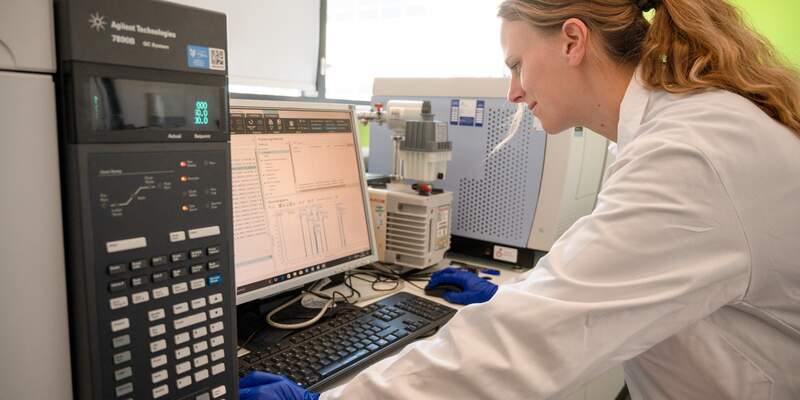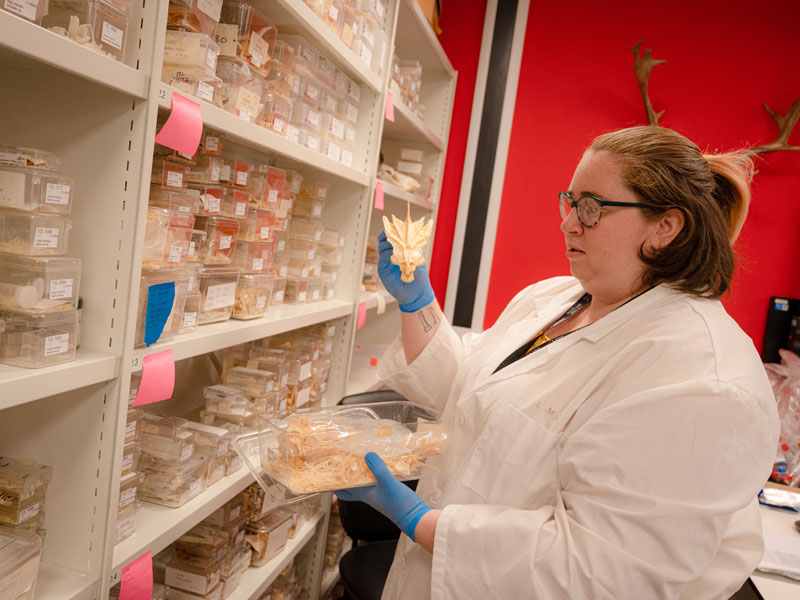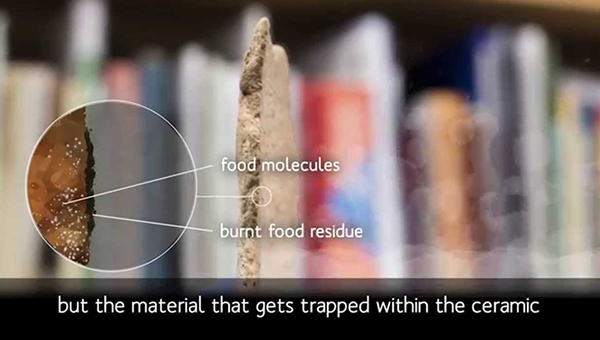
Organic residue analysis
Organic residue analysis is used to study organic materials deposited on archaeological artefacts during their use.
A major research strand at BioArCh is lipid residue analysis of ceramic vessels. We have applied this approach to investigate a range of samples, from some of the earliest pottery in the world to vessels from post-medieval urban deposits, and encompassing six continents, from central Russia to remote Island Oceania.
We are also leading on proteomic analysis of organic residues, exploring how the proteins can yield further detailed insights into vessel use.
Organic residue analysis in archaeology: a brief introduction
This presentation shows the analysis of lipids, such as fats, oils and waxes, extracted from archaeological artefacts, focusing on prehistoric ceramic sherds from Japan and Korea.
Related links
- Find out about out work in Stable Isotope Analysis
- See more on our work in Palaeoproteomics
- See details of our facilities in Organic Residue Analysis
Our people
| Photo | Name | Role |
|---|---|---|
 |
Professor Oliver Craig
|
Director of BioArCh Facility |
 |
Dr Jessica Hendy
|
Lecturer in Palaeoproteomics |
Focus areas
Our research focuses on three major areas:
Artefact use histories and material culture studies
How can information regarding artefact use help create more complete artefact biographies and what is the link between manufacturing characteristics and function? This research area links with our material culture studies research theme.

Current projects
- The Innovation, Dispersal and Use of Ceramics in NEEurope (INDUCE)
- Sicily In Transition: Exploring the Archaeology of Regime Change (SICTRANSIT)
- Long-term Coastal Adaptation, Food Security And Poverty Alleviation In Latin America (TRADITION)
- Demography, Cultural change, and the Diffusion of Rice and Millet during the Jomon-Yayoi transition in prehistoric Japan (ENCOUNTER)
Whilst we do not offer a commercial service in organic residue analysis, if you are interested in developing collaborations related to these areas then please contact us with an informal enquiry. More details regarding the approach are available in this guide for best practice as well as our current sampling guidelines.
We are particularly keen to develop the following areas through new projects or fellowships:
- Palaeoproteomics approaches to organic residue analysis
- Palaeometabolomic approaches to organic residue analysis
- Identification of plant residues in concert with palaeobotanical analysis
- AMS dating of organic residues on artefacts
- Experimental archaeology
- Practical and theoretical approaches to the study of material culture.
Collaborations
Organic residue analysis at BioArCh is embedded in a much wider international collaborative network. We currently coordinate the ChemArch innovative training network (ITN) providing international doctoral training for the next generation of artefact scientists. Other collaborators are:
| Researcher | Research institution |
|---|---|
| Carl Heron | Department of Scientific Research, British Museum, London |
| Karine Tache | Université Laval |
| Ester Oras | University of Tartu, Estonia |
| Shinya Shoda | Nara National Research Institute For Cultural properties, Japan |
| Andre Colonese | Universitat Autònoma de Barcelona, Spain |
| Miriam Cubas | University of Alcala, Spain |
| Martine Regert | CEPAM, University Cote d’Azur |
Please visit our facility page for more technical information about the instruments involved.
Related links
- Find out about out work in Stable Isotope Analysis
- See more on our work in Palaeoproteomics
- See details of our facilities in Organic Residue Analysis
